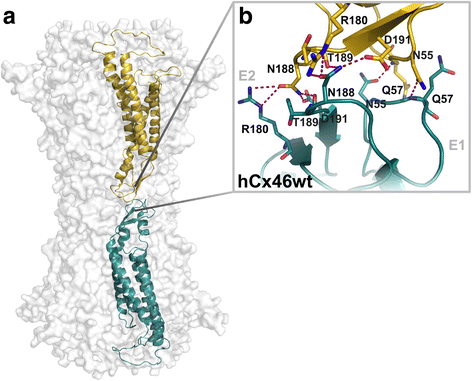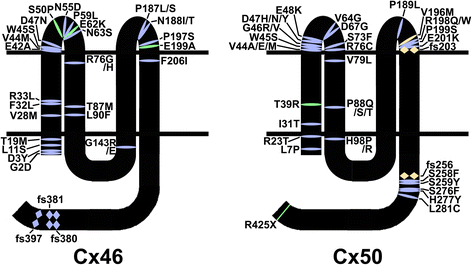Focus on lens connexins
- PMID: 28124626
- PMCID: PMC5267330
- DOI: 10.1186/s12860-016-0116-6
Focus on lens connexins
Abstract
The lens is an avascular organ composed of an anterior epithelial cell layer and fiber cells that form the bulk of the organ. The lens expresses connexin43 (Cx43), connexin46 (Cx46) and connexin50 (Cx50). Epithelial Cx50 has critical roles in cell proliferation and differentiation, likely involving growth factor-dependent signaling pathways. Both Cx46 and Cx50 are crucial for lens transparency; mutations in their genes have been linked to congenital and age-related cataracts. Congenital cataract-associated connexin mutants can affect protein trafficking, stability and/or function, and the functional effects may differ between gap junction channels and hemichannels. Dominantly inherited cataracts may result from effects of the connexin mutant on its wild type isotype, the other co-expressed wild type connexin and/or its interaction with other cellular components.
Figures




References
Publication types
MeSH terms
Substances
Grants and funding
LinkOut - more resources
Full Text Sources
Other Literature Sources
Miscellaneous

